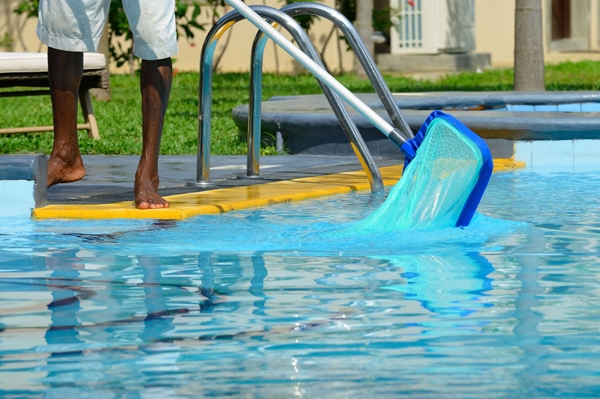We know, it’s depressing. The closing of the pool signals the closing of summer. One minute you are diving into a cool refreshing pool to escape the humid heat, the next you are scraping ice off your windshield. It’s heartbreaking. It’s Canada. It’s coming.
Once you have had a little time to grieve, you will need to start thinking how you can properly close your pool for the winter. This will save you a lot of time and money when you reopen it in the spring. It is important you close the pool as soon as the weather turns cool to ensure it’s well protected from possible freeze damage. Yes, we just said FREEZE damage.
So here is what you should do…
1. Balance your water chemistry
A week before closing your pool for the winter, you should balance the water chemistry. This involves testing and, if necessary, correcting the pH, alkalinity and calcium hardness levels. Adjust the pH to between 7.2 and 7.6; adjust the alkalinity to between 80 and 120 ppm (parts per million); adjust the calcium hardness to between 180 and 220 ppm. Properly balanced water chemistry helps prevent algae growth and staining of the plaster or liner.
2. Shock your pool
Once the water chemistry is balanced, the next step is to use chlorine or a chlorine substitute to kill any algae and bacteria present in the pool. This is known as shocking your pool. Be sure to follow the manufacturer’s instructions for the chemical products you use. Allow the chlorine level to reach 1 to 3 ppm over the course of a few days before moving on to the next step.
3. Add a winter algaecide
Shocking your pool should kill any algae in the water but it doesn’t stop more from blooming. The next step is to add a winter algaecide to banish algae from your pool throughout the offseason. Be sure to use a winter algaecide because a regular algaecide may not be strong enough to work all winter long.
4. Remove detachable parts
Remove, rinse and store all removable pool components and accessories, including ladders, chemical feeders, solar blankets and skimmer baskets.
5. Lower water level below the skimmer
Using a pump, the water should be lowered below the skimmer according to the type of pool cover you’re using. If you’re using a mesh cover, lower the water 12 to 18 inches (30.5 to 45.7 cm) below the skimmer. If you’re using a solid, floating cover, lower the water to 3 to 6 inches (7.6 to 15.2 cm) below the skimmer. By lowering the water level, you’re protecting the skimmer from potential damage if the water freezes.
6. Drain water from pump, heater, filters and hoses
All pumps, filters, heaters and chlorinators need to be drained of water before the winter. If water were to freeze inside the equipment, it could damage or ruin it.
- Open the drains on each piece of equipment to release the water inside.
- Remove the filters and clean them thoroughly. Store them in a dry place inside for the winter.
- If the filters cannot be removed, use a shop vacuum or air compressor to blow the remaining water out of them.
7. Clean your pool
You’re almost ready to close the pool, but first you should clean it thoroughly. Use a skimmer and vacuum to remove debris and brush the walls to remove any grimy buildup. By taking this step now, you’ll save time and money on maintenance when you reopen it.
8. Cover your pool
The final step is to cover your pool. It’s essential to use a tightfitting cover with no holes or gaps for leaves or debris to enter. Your choice in covers is between a mesh cover and solid cover.
Mesh covers are lighter and more durable than solid covers. They also offer more reliable protection because, unlike solid covers, no pump is required to remove excess water from the top; water simply passes harmlessly through the mesh material.
The advantage of solid covers is they keep dirty rainwater out of your pool and prevent sunlight
from entering the pool and stimulating algae growth. If you have trees surrounding your pool,
you can place a leaf net over it to catch debris.
Pool Closing Tips:
- Before you begin winterizing your pool, make sure that you have enough chemicals and the right tools for the job
- Start the winterizing process one week before the day you want to close your pool
- Inground pools can benefit from having deicing mechanisms in the skimmer
- Antifreeze should be run through the lines of an inground pool to prevent freezing
- The more work you do to winterize the pool, the fewer pool supplies you need to open it
- Monitor the chemical balance in your pool once a month during the winter
Good luck and stay strong.
